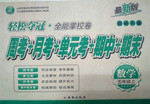题目内容
16.One afternoon,after finishing shopping in a supermarket,my family and I went to the checkout.I suddenly thought we didn't need any of the junk,and we abandoned all of those,saving﹩300.That got me thinking about all our pointless expenses in life.With a promise that we'd stop if it was killing us,I convinced the family to take the leap into frugality(节俭).The rules were that we would buy nothing for 30 days except absolutely essentials.
Our adventure began with a great start.By 9 a.m.,my wife,Ruth,had already made cakes from old
strawberries and picked flowers I didn't even know we had in the garden.I cleared the car by hand for the first time for years.I read and returned the neighbor's newspaper before he woke up.Total spending on the first day:﹩0.
As days turned into weeks,we became so proficient(熟练的)at living frugally.We started riding our bikes to save gas.My child's finger painting was recycled as gift wrap for the homemade presents.We started to use an Internet application like Skype for free phone calls and ask neighbors with gardens for extra vegetables and herbs.
In the end,we saved more than $2000 by not spending for a month.When we began,I imagined we would
rush out the moment we were done and buy a lot of things in the supermarket,then maybe hit the mall or go to the movies.
24.We can infer from the passage that before that very afternoon,the familyC.
A.had had higher income and living standard
B.had adopted an advisable habit of saving money
C.had often spent money without thinking much
D.hadn't expected they would have financial problems
25.How many things were mentioned about what the family did to save on the first day of the"30days"?B
A.Two
B.Three
C.Four
D.Five
26.The end of the story suggests that the familyD.
A.stopped halfway because of unexpected things
B.could barely put up with the life of frugality
C.would return to normal after the"30days"
D.succeeded in saving and changed their spending habit
27.This passage is mainly aboutC.
A.how a new idea came up
B.a family's way of solving life problems
C.a family's no-buying try
D.how a family managed their daily life.
分析 本文属于说明文阅读,作者通过这篇文章主要向我们描述了一个家庭成功拯救和改变他们的消费习惯的事例.
解答 24.C.推理判断题.根据第一段my family and I went to the checkout.I suddenly thought we didn't need any of the junk,and we abandoned all of those,saving﹩300可知这个家庭往往不经思考的花钱;故选C.
25.B.细节理解题.根据第三段had already made cakes from old strawberries and picked flowers I didn't even know we had in the garden.I cleared the car by hand for the first time for years可知有三样东西草莓,鲜花和汽车被提到;故选B.
26.D.推理判断题.根据最后一段In the end,we saved more than $2000 by not spending for a month.When we began,I imagined we would rush out the moment we were done and buy a lot of things in the supermarket可知故事的结尾暗示着这个家庭成功拯救和改变他们的消费习惯;故选D.
27.C.推理判断题.根据第二段With a promise that we'd stop if it was killing us,I convinced the family to take the leap into frugality(节俭).The rules were that we would buy nothing for 30 days except absolutely essentials可知文章主要讲一个家庭成功拯救和改变他们的消费习惯;故选C.
点评 考察学生的细节理解和推理判断能力,做细节理解题时一定要找到文章中的原句,和题干进行比较,再做出正确的选择.在做推理判断题不要以个人的主观想象代替文章的事实,要根据文章事实进行合乎逻辑的推理判断.

 轻松夺冠全能掌控卷系列答案
轻松夺冠全能掌控卷系列答案